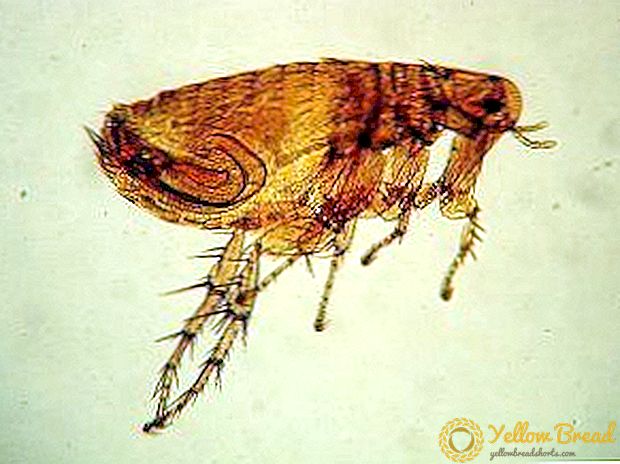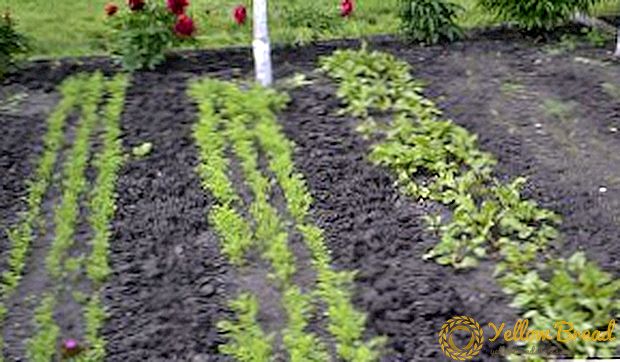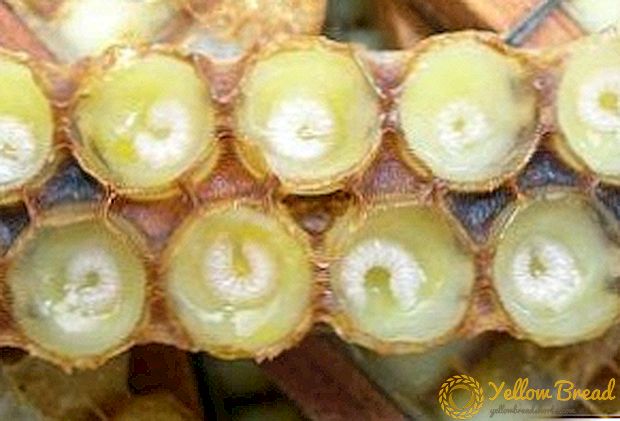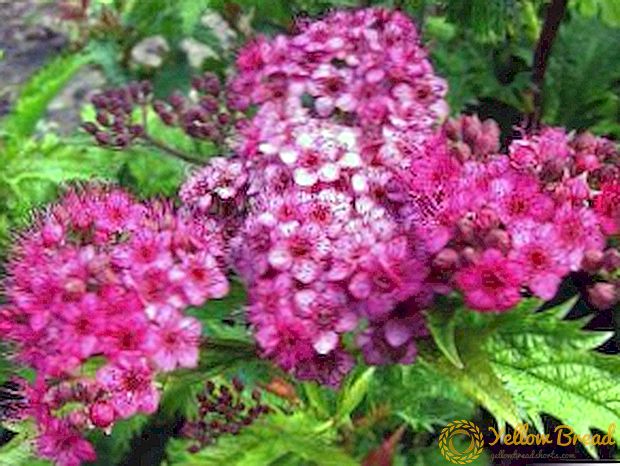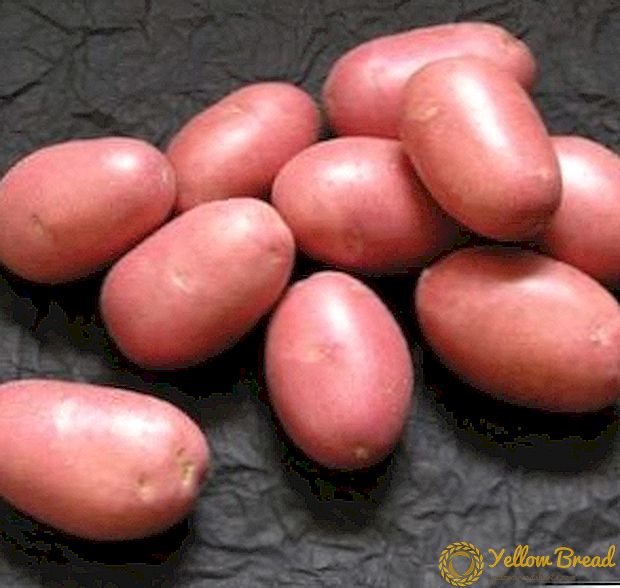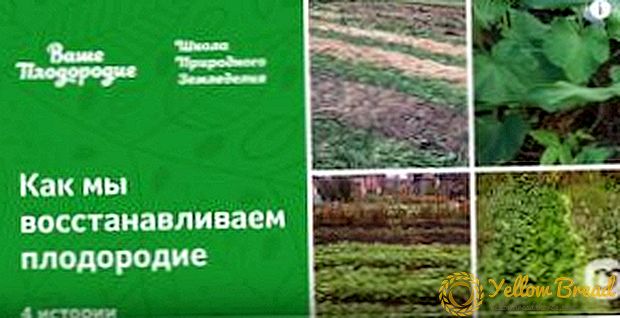
There are a lot of advantages in growing Beijing, even the fact that even in conditions of medium breadth one can easily get two harvests in one season.
Also, this cabbage has a very large number of nutrients, and just is a tasty vegetable. But still, many still remain loyal to ordinary white cabbage.
Today we will try to debunk all the myths about the unsuitability of our conditions for the growth of “peking” and that it is very difficult to grow it.
Of course, we will not forget to mention the struggle with the three main problems that usually arise when cultivating this vegetable by inexperienced gardeners: rifling, cruciferous flea and mucus.
Beijing cabbage: how to prepare for planting?
Preparing for planting is one of the most crucial moments in the whole process of planting cabbage. If it is wrong to prepare planting materials, choose a bad place to grow, do not feed the soil with fertilizers, then you will not even have to hope for a good crop.
Especially in the case of growing cabbage, you need to be very careful, and at least shoe yourself before this on a theoretical level.
What are the peculiarities of growing "peking": temperature, climate and other important aspects

We have already mentioned that, considering Peking cabbage as an Asian plant, many mistakenly consider it unsuitable for cultivation in the midland climate.
But in fact, things are completely different, because in a very warm climate with a very long light day, this plant fights an arrow with seeds, without forming the necessary heads for gardeners.
Thus, our climate is suitable for “peking” as well as possible, and even allows us to receive one crop from the beginning of spring, and the second in autumn.
The optimum temperature for its growth is from 13 to 20ºС. At lower temperatures, the plant will not grow at all, and at higher temperatures, it will launch an arrow.
A place to grow "peking" should be picked up by the sun, although it should not be forgotten that excessive lighting can harm it.
To prevent this, experienced gardeners are advised to pre-stock a special non-woven fabric. It can be simply indispensable when it is growing Chinese cabbage, because:
- Under such a shelter, young seedlings and seedlings will not be afraid of frost. Indeed, despite the good resistance to low temperatures in adult plants, young people are very susceptible to this.
- Such a canvas will be an indispensable shelter of cabbage from overheating in the sun.
- The canvas will not pass through itself absolutely all precipitation, saving cabbage from an overabundance of moisture in the soil. By the way, it is high humidity that often causes this plant to rot.
- Sheltered plants are at times less damaged by their most inveterate enemy, the cruciferous midge, which simply cannot detect the plants under cover.
As you probably already understood, it is better not to plant Peking cabbage on those beds where moisture is very close to the surface. After all, the danger will be not only the likelihood of rotting of the roots, but also the fact that with a large amount of moisture the earth can either become extremely cold or heat up much, which is also not desirable for the plant described.
Also, do not forget to clarify exactly which plants grew in the garden before. Best of all, Beijing cabbage will grow only after garlic, onions, carrots, potatoes and cucumbers.
Thus, from the same bed from spring you can get garlic / onion / cucumber, and by the autumn grow another peking.
We select the soil and prepare it for planting Peking cabbage

As for the most acceptable type of soil for growing "peking", then the answer definitely will not work.
This plant can bear fruit well on any soil, if it is well cared for.
However, it is preferable to choose light, fertile and able to pass through moisture, not holding it for a very long time (that is, you must completely eliminate clay soils).
A good option for all types of cabbage are loam.
For growing seedlings, humus is usually mixed with a coconut substrate, and the latter must be taken twice as much.
Good results were also shown by a mixture of turf land with the addition of the same amount of peat. Such a soil will be very nutritious for seeds, therefore, in warmth and with good watering, seedlings appear in it instantly.
When sowing seeds in open ground, half a liter of humus and a small amount of moisture are added to each well, which also stimulates sprouts and further growth of cabbage.
When planting seedlings, the bed should first be thoroughly dug, adding a small amount of humus to it (although if the bed is not very fertile, then the amount of fertilizer should be increased).
Also, very wide beds for planting Peking cabbage are not recommended. It is best to make a narrow, with deep trenches on the sides, which will be excessive moisture.
What are the features of different varieties of "peking": ripening terms and yield
In general, Chinese cabbage should be considered a very early crop, however, it also has varieties of different ripening terms. So, there are early ones that ripen in about 40-55 days from the time of sowing the seeds, medium ones - the crop becomes suitable for consumption in 55-60 days, and late ones that can mature even 80 days.
If we talk about the varieties of Peking cabbage, then absolutely all gardeners agree that the best are the Dutch varieties. Let's name the most popular of them:

- Early Peking cabbage is represented by such varieties as "Orange Mandarin" (best sown in spring, cabbages are obtained up to 1 kilogram), "Vesnyanka" (cabbages are not large, but quickly ripening, resistant)"Asten" (it takes about 55 days from the moment of planting the seedlings to the pickup of 1-1.1 kg heads), and also "Sprinkin" (it has good taste and can be stored for some time after harvest).
- Among middle-ripening varieties, the “Glass” is considered to be the best (it has huge cabbages - up to 2 kilograms by weight), “Bilko” (characteristic cabbages weighing up to 1.5 kilograms and good taste), Vorozheya (almost no arrow, fruits weighing 2 kilograms).
- By the late varieties of Beijing cabbage, it is necessary to include “Russian size” (the leader in the size of heads is 3-4 kilograms), “Nick” (ellipsoid fruits weighing up to 3 kilograms; you can even boil like ordinary white cabbage), “Parkin” ( small fruit weighing up to 1 kilogram, but with a very good taste).
Seed preparation for planting in the soil
Sowing Chinese cabbage seeds is also notable for its unprecedented simplicity, since they do not even require soaking.
In general, purchased seeds can easily be sent to the soil and not worry about whether they will grow or not.
In the event that you grew the seeds yourself or someone lent you a little, a few of them need to be germinated in order to check their overall suitability for sowing.To do this, they are laid out on a piece of wet tissue, it is covered and left in a warm place for some time (moisture content of the fabric must be maintained constantly).
Normally, after 3-5 days they should germinate. If this does not happen even after a week, it is better to look for other seeds.
We are engaged in sowing seeds and planting seedlings of Peking cabbage
To begin planting Beijing cabbage, it is important to familiarize yourself with the time of sowing of its seeds. Also, the timing of planting on a straight line will depend on whether there will be arrows on the plant, or you will be able to grow a full harvest.
But the most important thing is not to be afraid of difficulties, since in practice the landing process is much easier than described.
Terms of landing "Peking": when to start to avoid marksmanship

We have repeatedly mentioned that you can plant Peking cabbage 2 times in one season and get two excellent harvests. So, the first time it is usually planted in the spring, for which seeds are sown on seedlings since the end of March, and the second - in the summer, and the seeds are sown around the end of June.
For planting seedlings is chosen such a time when the duration of the day is not particularly long, but at the same time the temperature of the air and the soil is more or less warm (above 13-20ºС) and stable.
The first landing, which is called early spring, takes place from about 15 to 20 April. During this period of time, spring frosts very often occur, which can severely harm the plant. To avoid this, it is very important immediately after landing. cover the cabbage with linen.
Well saves from frost soil mulching.
The summer-autumn planting of seedlings of Peking cabbage is carried out from July 20 to August 10. She will have plenty of time for full growth and heading, so even before the first autumn frosts you can catch a well-ripened harvest.
Planting scheme: what space do you need Peking cabbage for growth?
Planting cabbage can be both with and without seedlings. In the first case, the seeds of this plant are placed in pots of soil to a depth of 0.5-1 centimeter. A lot of space for the growth of seedlings is not necessary, although it is better to place the seeds at a distance of 1-2 centimeters from each other.
After 2-3 days, shoots should appear, and after 25-30 days, along with the appearance of 4-5 leaves on the seedlings, it can be transplanted into open ground.
If you decide to plant the seeds immediately in open ground, which is quite acceptable to do in the summer, then for this you will need to prepare special holes.
By the way, the layout of the holes will be identical to the seedling planting pattern: 25-30 centimeters between the plants and between the rows (you can leave more space between the rows to make it more convenient to process the plants).
Each well should immediately be fertilized by pouring half a liter can of humus (compost) into it, as well as adding approximately 2 tablespoons of wood ash.
In order to better absorb the fertilizer into the soil and quickly get to the roots of the plant, a lot of water also flows into the wells. If you sow the seeds - they need to be embedded up to a depth of 1-2 centimeters.
When planting seedlings need to focus on its size, but in no case do not bury its leaves.
How to properly care for Peking cabbage in your own garden to achieve high yields?
Caring for garden plants, which everyone does not like so much, in the case of growing Chinese cabbage, there is absolutely no way to avoid it.Although, in general, it is not whimsical, but various pests love it very much, therefore, without special measures, it will not be possible to get a good result.
Also, every gardener seeks with all his might to increase the results of the fruiting of his cabbage, which we will help you to make with your recommendations.
How to deal with pests and diseases of Peking cabbage?
The most terrible pests "peking" are cruciful midge and slugs. It is especially difficult to fight the first, since it brings enormous harm to plants and it is often impossible to bring it out.
For this reason, it is best to adhere to the following preventive measures:

- Planted plants in the above terms, when these insects are not yet there, or they have already disappeared.
- Use of a nonwoven cloth for shelter of plantings of the Peking cabbage.
- Even before the emergence of seedlings, the bed should be powdered with the help of wood ash.
- It is very important to change crops in the beds correctly, and in no case should you plant a peking plant after radishes, mustard and other types of cabbage.
- You can mix cultures, which sometimes helps to fool this pest.So, this cabbage can be mixed with tomatoes, garlic, onions, cucumbers, potatoes and even petunias.
If such measures did not help, it is necessary to use biological products - "Phyto-farm" or "Bitoksibatsilin", as well as strengthen their action by dusting with ashes and tobacco. If you have noticed a particular activity of insects - use chemicals - "Aktar", "Inta-Vira" (but not later than a month before the harvest.
With slugs are also struggling with tricks. In particular, it is possible to lay out burdock leaves, planks on / under which they will crawl by all means and suppress the pests manually. In addition, the cabbage can be sprayed with a mixture of ash, salt, mustard powder, red pepper.
How to Water "Peking": Regularity and Volume

Watering is one of the very important aspects of caring for Chinese cabbage.
However, it is very important not to overdo it with this case, because, as we have already mentioned, large amounts of moisture can cause the plant and the whole plant to rot. Therefore, even the seedlings are stopped to be watered after the first week of growth (although when growing in open areas of soil, it is more likely to focus on weather conditions).
In general, watering should be carried out no more than once a week, although it is worth using a sufficiently large amount of water. Another important condition is the water must be warmotherwise, the plant may react quite painfully to temperature changes.
A good piece of advice would also be that the bed already after a week after planting the seedlings can be covered with mulch. It will not only retain moisture in the soil well, but will also become an obstacle to growth in the garden of weeds. In the springtime, mulch also serves as protection against frost.
We feed beds with Chinese cabbage: what fertilizers are needed?
Top dressing "Peking" can be started within 2 weeks after the plant is planted in a permanent place.
You can use the following fertilizers, with the calculation of 1 liter per plant:
- Water + mullein (1:10).
- Water + chicken droppings (1:20).
- Water + herbs (1: 9).
If the cabbage was planted in the spring - fertilize it 3 times, in the summer - only two.
To form good heads, they are sprayed with the following solution: 2 grams of boric acid per 1 liter of hot water + 9 liters of cold.
We perform staking of Peking cabbage to increase its stability.
It is possible to pinpoint seedlings of Peking cabbage within a week after germination. For this purpose, cups and boxes with it are exposed to sunlight, and for a short period of time they are brought to fresh air in order to adapt to the cold.
Harvesting and storage of the harvest of Peking cabbage
You can cut the cabbages "Peking", which have already become quite dense.
In the fall you shouldn’t be in a hurry, as she’s not afraid of -4ºC.
You can only store summer cabbage, wrapping it in plastic wrap and leaving it in a room with a temperature of + 5-7 ºС.

